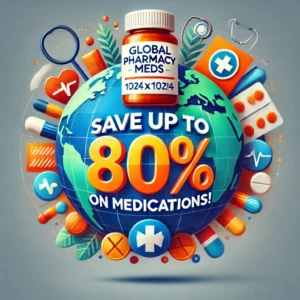Chapter 6: Toxins in Your Daily Life
We often think of cancer risk as something tied to our genetics or diet—but many people overlook the environmental toxins we’re exposed to every single day. These include ingredients in our personal care products, chemicals in our cleaning supplies, plastics in our food containers, and even pollutants in our air and water.
While the body has remarkable detoxification systems—chiefly the liver, kidneys, and lymphatic system—chronic exposure to low-dose toxins can overwhelm these systems and increase cancer risk over time.
This chapter helps you understand where these toxins hide, how they influence cancer development, and what you can do to reduce your exposure.
Understanding Environmental Carcinogens
A carcinogen is any substance that can cause or promote cancer. These can damage DNA directly or interfere with the cellular processes that regulate growth and repair.
Carcinogens can be:
-
Chemical (e.g., pesticides, heavy metals, plastics)
-
Physical (e.g., radiation from the sun or medical equipment)
-
Biological (e.g., certain viruses or bacteria)
It’s the chronic, cumulative exposure to these agents—especially in the absence of good detoxification and nutrition—that creates a pro-cancer environment in the body.
Top Toxins to Watch Out For
1. Endocrine Disruptors
These chemicals mimic or interfere with hormones, especially estrogen, which is closely tied to hormone-sensitive cancers (like breast and prostate cancer).
Common examples:
-
Phthalates – Found in plastics, perfumes, and shampoos
-
BPA (Bisphenol A) – Found in plastic bottles, canned food linings
-
Parabens – Found in cosmetics and lotions
✅ What to Do:
-
Choose “BPA-free” containers (prefer glass or stainless steel)
-
Use fragrance-free and paraben-free personal care products
-
Avoid microwaving food in plastic
2. Pesticides and Herbicides
Used widely in conventional agriculture, pesticides like glyphosate and organophosphates have been linked to increased cancer risk, particularly lymphoma and leukemia.
✅ What to Do:
-
Buy organic when possible, especially for the “Dirty Dozen” (a list of produce most contaminated with pesticides)
-
Wash produce thoroughly
-
Support local, organic farmers or start a home garden
3. Household Cleaners
Many common cleaning products contain formaldehyde, ammonia, chlorine, and VOCs (volatile organic compounds)—all of which are respiratory and skin irritants, and some of which are linked to cancer.
✅ What to Do:
-
Use natural cleaning agents like vinegar, baking soda, and castile soap
-
Choose brands that disclose ingredients and are labeled non-toxic or “green”
-
Ventilate your home regularly and use air purifiers if possible
4. Air Pollution
Long-term exposure to polluted air increases the risk of lung cancer, cardiovascular disease, and chronic inflammation. Even indoor air quality can be problematic due to off-gassing from furniture, paint, and synthetic carpets.
✅ What to Do:
-
Invest in a HEPA air purifier, especially if you live in a city or near heavy traffic
-
Open windows regularly for fresh air
-
Add air-purifying plants like snake plant, peace lily, and spider plant
-
Avoid burning synthetic candles or incense indoors
5. Water Contaminants
Tap water may contain chlorine, heavy metals, pesticides, and pharmaceuticals, depending on your region and water treatment facility.
✅ What to Do:
-
Use a high-quality water filter (such as activated carbon or reverse osmosis)
-
Drink from glass or stainless-steel bottles
-
Avoid bottled water stored in hot or sun-exposed conditions (plastic leaching)
Support Your Body’s Natural Detox System
You can’t live in a bubble—but you can support your body’s detox pathways to manage exposure:
-
Stay hydrated – Water helps flush toxins through urine and sweat
-
Eat cruciferous vegetables – Broccoli, kale, cabbage help activate liver enzymes
-
Increase fiber intake – Helps bind and eliminate toxins through the digestive tract
-
Exercise regularly – Sweating promotes toxin elimination
-
Limit alcohol – Excess alcohol burdens the liver and impairs detoxification
-
Dry brushing & saunas – Support lymphatic drainage and skin detox
Simplify Your Environment, One Step at a Time
Detoxing your life isn’t about fear—it’s about empowerment through awareness. You don’t need to overhaul your entire lifestyle overnight. Start with one area of your home—your kitchen, your bathroom cabinet, or your cleaning products—and make small, sustainable changes.
Use tools like:
-
EWG’s Skin Deep Database to check personal care product safety
-
Think Dirty app to scan household and cosmetic items
-
Environmental Working Group’s Clean Fifteen/Dirty Dozen list for produce
In Summary
Your home should be a safe haven—not a source of chronic, low-grade toxic exposure. Reducing your contact with harmful chemicals doesn’t require perfection—just progress. The fewer toxins your body has to fight off, the more energy and resources it has to heal, regenerate, and protect against cancer.
In the next chapter, we’ll explore occupational and community-based cancer risks, and how to advocate for safer environments at work and beyond.
Save Up to 80% on Your Prescription Drugs
 Looking to save big on your prescriptions? GlobalPharmacyMeds.to helps you access high-quality medications at unbeatable prices—save up to 80% by filling your prescriptions through our trusted international pharmacies!
Looking to save big on your prescriptions? GlobalPharmacyMeds.to helps you access high-quality medications at unbeatable prices—save up to 80% by filling your prescriptions through our trusted international pharmacies!
Get the same FDA-approved medications at a fraction of the cost while ensuring safety, reliability, and convenience. Why overpay when you can get affordable, authentic prescriptions delivered to your door?
Take control of your healthcare costs today with GlobalPharmacyMeds.to!


